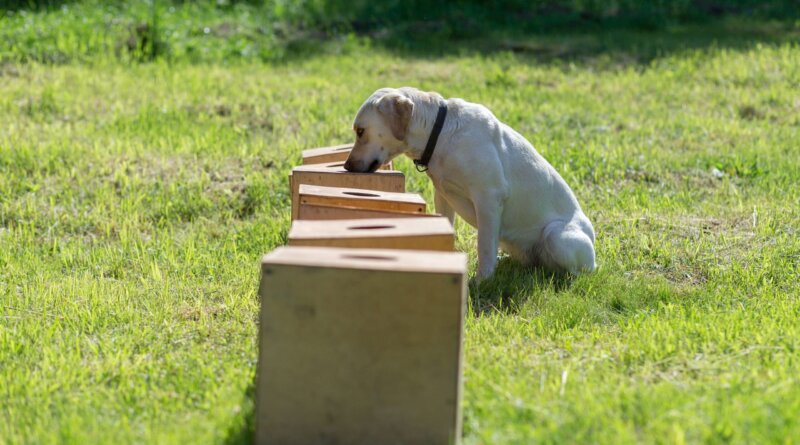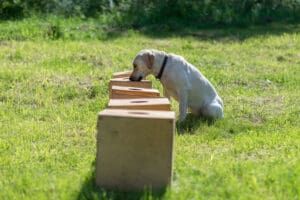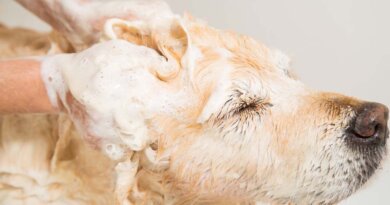Scent Training for Dogs – Whole Dog Journal
Nosework, or scent training for dogs, such as American Kennel Club (AKC) scent work, is a dream come true for many dogs. From your dog’s point of view, the world is a glorious pot of swirling smells, and nothing makes a dog happier than sniffing and nose work. Scent work for dogs makes use of olfaction (the sense of smell), a dog’s superior sense.
Dog scent training and nosework games can start with tiny puppies. I have done early scent introduction (ESI) starting with 3-day-old puppies. After all, the puppies are already seeking out their dam and her nipples by using their noses to smell milk. Scent training for dogs is just building on what they already do by instinct from a young age.
For ESI, I expose each puppy to a different scent daily. It might be a leaf, hair from my barn cat, or whatever. Reactions from the puppies can be clear. They may ignore the object, push it away if they don’t like it, or do deep inhales for odors they like. Of course, this is not really scent training but simply honing on the puppy’s natural skills.
AKC Scent Work and Other Nosework Events
Dog sports now include plenty of fun games where your dog and his nose get to lead the way. For scent work and dog nosework competitions, your dog is trained to seek out different essential oils in low concentrations. Commonly used scents are birch, anise, and clove. A scented cotton swab is hidden in various places and the dog must find it. If you think this sounds like a drug dog searching for marijuana, you’re right.
Usually, the scents are paired with food for training, although some dogs prefer toys. Dogs are rewarded immediately “at the scent source” with their treats. No wonder these sports are listed among the top five favorite dog sports! Food and sniffing are two of most dogs’ favorite things.
Many new dog scentwork sport groups have appeared in the last few years. Competitions may include finding lost items, locating shed antlers, or doing the essential oils with different areas for hides. Hides can be indoors, outdoors, on vehicles, in containers. Among the groups offering these competitions are Canine Performance Events, the American Kennel Club (AKC), National Association of Canine Scent Work, and the North American Sport Dog Association.
Why Dogs Excel at Scent Training
The average dog smells 1,000 to 10,000 times better than the average person. In their nasal cavities are over 100 million sensory receptor sites to track scents, while people have about 6 million. To analyze all the scents, canine brains have 40 times more capacity for olfaction than humans do.
Along with simply being able to pick up faint scents, dogs have excellent scent memory and delayed scent fatigue. Your dog may remember another dog by scent from one exposure years ago. While our brains shut off a smell quickly, our dogs continue to track that smell while managing many other odors.
Along with nostrils that pick-up scents independently, dogs also have a vomeronasal, or Jacobsen’s organ, located right behind the upper incisors that boosts their ability for scent work. Dogs can detect pheromones and tell if you are happy or sad just by scent. They can pick up low blood sugar and changes that indicate a seizure is coming.
It’s simply amazing what a canine nose can do, and it’s an incredible amount of fun for you and your dog to do canine scent training and nosework events.




